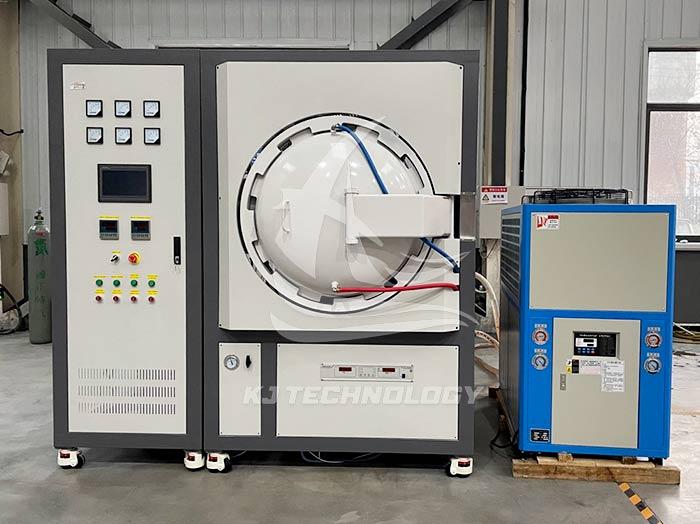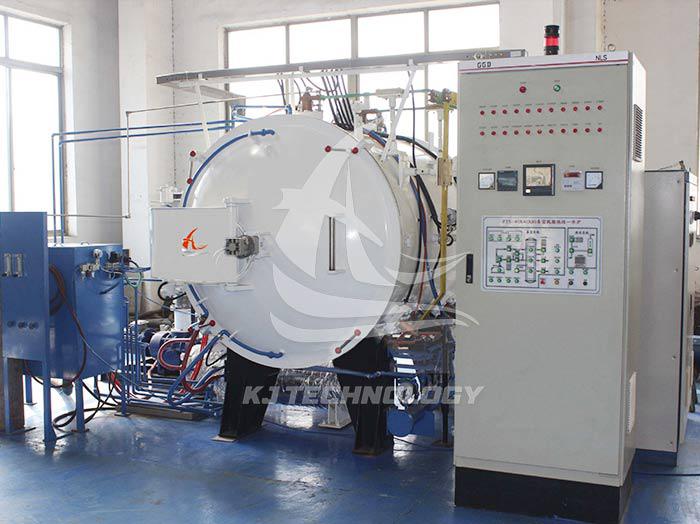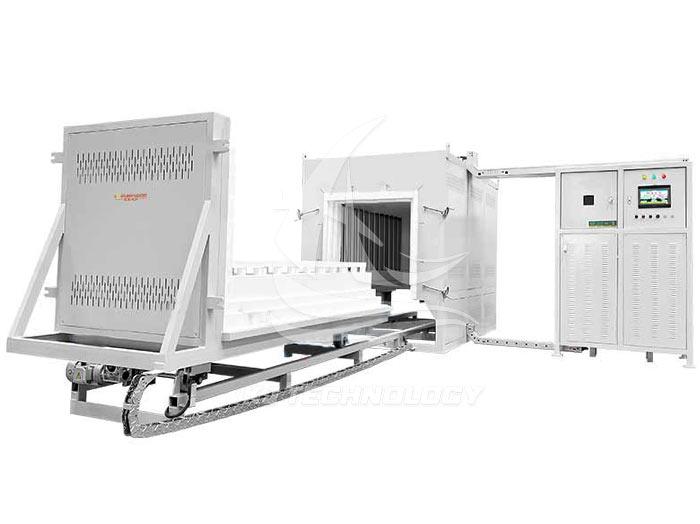The temperature of the vacuum atmosphere muffle furnace cannot rise
 09-12-2025 Author: KJ technology
09-12-2025 Author: KJ technology
The inability to increase the temperature of the vacuum atmosphere muffle furnace may be caused by various factors such as heating element failure, power and control system problems, thermocouple or temperature controller failure, vacuum system interference, equipment structure and design defects, improper operation and maintenance, etc. The following is a specific analysis and solution:
1. Heating element malfunction
Heating wire breakage or aging
Phenomenon: The heating wire locally turns red unevenly or does not heat up at all.
Reason: Long term high temperature use leads to material embrittlement, or frequent start stop acceleration of fatigue fracture.
Solution:
Use a multimeter to check the resistance of the heating wire. If the resistance is infinite, it needs to be replaced.
Regularly check whether the heating wire connection is loose or oxidized, and tighten or clean it in a timely manner.
Insufficient power of heating element
Phenomenon: The temperature rises slowly and cannot reach the set value.
Reason: The selection of heating elements is too small, or the actual power is lower than the rated value.
Solution:
Check the equipment nameplate parameters and confirm whether the heating element power meets the process requirements.
If an upgrade is required, it is necessary to contact the manufacturer to replace the heating element with a higher power and adjust the temperature control parameters.
2. Power and control system issues
Unstable power supply voltage
Phenomenon: Large temperature fluctuations or sudden cessation of heating during the heating process.
Reason: Voltage fluctuations in the power grid, aging of power lines, or poor contact.
Solution:
Use a voltmeter to measure the input voltage and ensure it is within the rated range.
Check if the power circuit is aging, replace damaged cables, and tighten the wiring terminals.
Temperature controller malfunction
Phenomenon: Abnormal temperature display (such as constant display of room temperature), or no change in output signal.
Reason: The internal circuit of the temperature controller is damaged, the parameter settings are incorrect, or the sensor is faulty.
Solution:
Restart the temperature controller and check if the parameter settings are correct (such as PID parameters, range, etc.).
Use a standard signal source to test the output of the temperature controller. If it is abnormal, it needs to be replaced or repaired.
Solid state relay (SSR) damaged
Phenomenon: The heating element works intermittently, and the temperature rise is unstable.
Reason: SSR overload, poor heat dissipation, or internal breakdown.
Solution:
Use a multimeter to check the resistance of SSR input/output terminals. If the resistance is abnormal, it needs to be replaced.
Ensure that the SSR heat sink is clean, well ventilated, and avoid prolonged overload operation.
3. Thermocouples and Temperature Measurement Issues
Thermocouple damage or position deviation
Phenomenon: The displayed temperature value is much lower than the actual value, or the temperature fluctuates abnormally.
Reason: Thermocouple aging, breakage, or insufficient insertion depth leading to measurement errors.
Solution:
Use a standard temperature source to calibrate the thermocouple. If the error exceeds the allowable range, it needs to be replaced.
Adjust the insertion depth of the thermocouple to ensure that its measuring end is located in the central area of the furnace.
Temperature compensation wire error
Phenomenon: The temperature display value deviates significantly from the actual value and varies with the ambient temperature.
Reason: Compensation wire model mismatch or wiring error causing signal interference.
Solution:
Verify the compensation wire model (e.g. K-type thermocouple requires K-type compensation wire) and rewire.
Avoid parallel laying of compensation wires and power cables to reduce electromagnetic interference.
4. Vacuum system interference
Insufficient vacuum degree leads to enhanced heat dissipation
Phenomenon: The temperature rises slowly, especially in the high temperature range (such as>1000 ℃).
Reason: When the vacuum degree is low, the convection of gas inside the furnace increases, accelerating heat loss.
Solution:
Check for leaks in the vacuum pump, seals, and pipelines to ensure that the vacuum level meets the process requirements (such as<10 ⁻ Pa).
When the vacuum degree is insufficient, reduce the heating rate or extend the holding time.
Gas release effect
Phenomenon: After the temperature rises to a certain value, it stagnates or even decreases.
Reason: Materials inside the furnace (such as insulation layers and workpieces) release gas at high temperatures, increasing the heat load.
Solution:
Pre firing treatment: Keep the material at a low temperature range (such as 300 ℃) for a long time to fully release air.
Replace insulation materials with low air release rates (such as alumina fiber felt).
5. Defects in equipment structure and design
Decreased furnace insulation performance
Phenomenon: The temperature rises slowly and the temperature of the furnace shell is too high.
Reason: The insulation layer is aging, cracking, or improperly installed, resulting in heat loss.
Solution:
Check the integrity of the insulation layer, replace the damaged parts, and re fix them.
Fill the insulation layer and furnace shell with materials with low thermal conductivity (such as aerogel felt).
Furnace size and power do not match
Phenomenon: The temperature rises slowly, especially in large capacity furnaces.
Reason: Insufficient power of heating element or excessive heat dissipation area of furnace.
Solution:
Calculate the furnace heat load and increase the number or power of heating elements if necessary.
Optimize the furnace structure and reduce unnecessary openings or heat dissipation surfaces.
6. Improper operation and maintenance
The heating rate is set too fast
Phenomenon: The temperature rises to a certain value and then stagnates, or there are frequent over temperature alarms.
Reason: The heating rate exceeds the capacity of the equipment or material, resulting in intervention of the temperature control system.
Solution:
Adjust the heating rate according to the process requirements (such as high temperature section ≤ 5 ℃/min).
Segmented heating program is set to extend the insulation time at critical temperature points.
Equipment has not been maintained for a long time
Phenomenon: Unstable temperature rise accompanied by abnormal noise or odor.
Reason: Dust accumulation, oxide scale accumulation affecting heat dissipation, or aging of electrical components.
Solution:
Regularly clean the furnace, heating elements, and cooling fans to ensure good ventilation.
Establish equipment maintenance records and replace vulnerable parts (such as thermocouples and seals) periodically.








